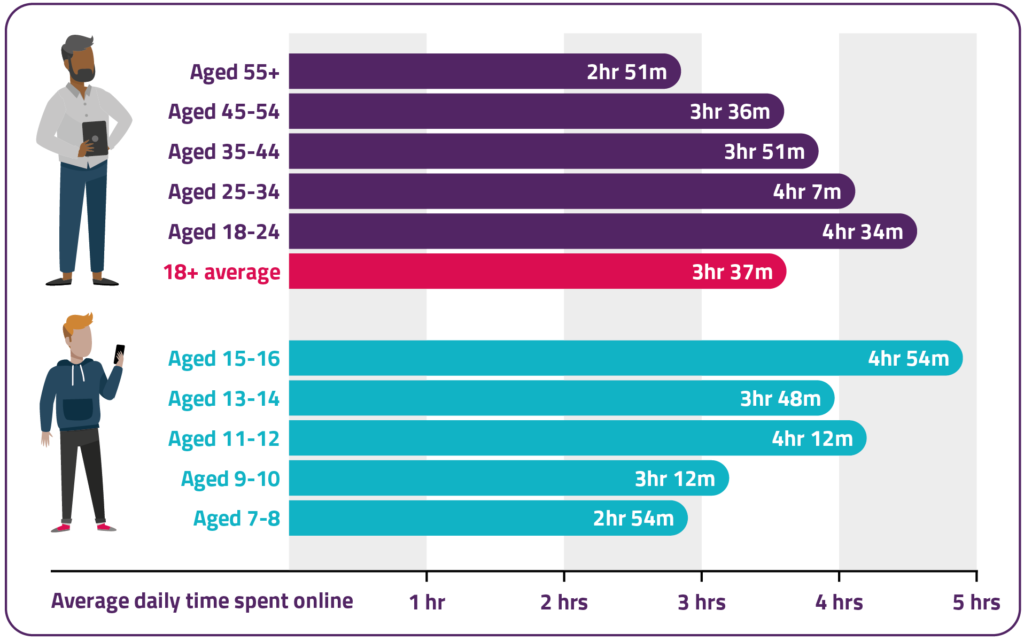I’ve been in tech since the 90s. It’s not always been easy but on the whole there’s been more ups than downs. But back in the 90s I thought we’d fixed or were fixing the systemic bias against women. I was wrong.
It is simply not good enough when the government or government agencies such as the country’s digital regulator misrepresent or ignore women. Take this advert from the UK government over which there was widespread condemnation: women labouring in the home and the sole man lounging on the sofa.

It’s even worse when Ofcom – the UK’s digital regulator – portrays online digital habits with a graphic like this.

If you cannot see the bias in this graphic then frankly you’re part of the problem. It’s no use making noises that we want more women in our industry when this is the way we present technology consumption, never mind technology creation. But dig down on the Ofcom page and the unconscious bias is worse.
“Around half (49%) of UK adults (around 26 million) visited an adult website or app in September 2020. The largest, Pornhub, was visited by around a third of online adults in September 2020 – representing half of all UK online men, and 16% of UK online women.”
Calling out pornography as one of the few examples given of online services isn’t a problem if it’s balanced by telling us what women are doing online. Ofcom’s own figures show that viewing porn is a male-oriented pastime. So what were women doing? What sites do they like?
This type of unconscious bias occurs because the people doing the research are men. Whether it’s journalists, analysts or industry researchers the field is still heavily biased towards men. Which means women’s voices and not being heard and we’re still getting graphics and analysis like this.
In the main report there are not many graphics representing actual humans, but where there are these are all universally male.
- page 27 – male representing adults that used Facebook-owned messaging services
- page 66 – two male silhouettes representing online gaming
- graphic used to promote findings – two male figures (as shown above)
Unless we employ more women to analyse and discuss the technology market this bias will continue. Most male tech execs I pointed to the Ofcom page couldn’t see anything wrong with it. After all, it represented them. The dawning realising “oh I see” shows that the bias isn’t necessarily deliberate, but it’s there. And while it’s there it is putting off another generation of girls and women from participating in the technology industry. Inclusion means representing what matters to women, showing them in our reports, understanding their attitudes, behaviours and opinions. Over 25 years ago I overhauled the way reports were written at Ovum and insisted that graphics represent women as well as men, all age groups and people of different ethnicities.
While we may have made a lot of progress on the latter, we are still not representing that technology is for women too, and for children, young adults and older people.
A typical lost opportunity from this Ofcom report was the assertion that more women than men disagree that people should be permitted to say whatever they like online. Why? Because in the answer to the ‘why’ is where we find out what matters to women.
